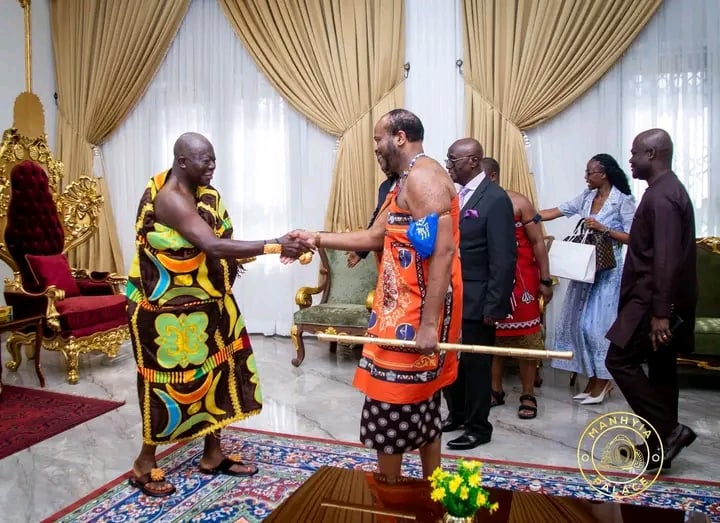The recent encounter between His Majesty Otumfuo Osei Tutu II, the Asantehene of the Ashanti Kingdom in Ghana, and His Majesty King Mswati III of Eswatini, has etched itself into history as a remarkable and unprecedented event. The meeting’s significance is amplified by a seemingly simple gesture: Otumfuo Osei Tutu II rising to greet his Eswatini counterpart. This act, a rare departure from Asante custom, speaks volumes about the respect and recognition accorded to King Mswati III. According to historian and lawyer Nana Obiri Boahen, the Asantehene’s decision to stand and exchange greetings is a significant departure from tradition, where such an action is generally considered taboo. He cited a historical precedent, the meeting between Otumfuo Opoku Ware II and Pope John Paul in 1980, as the last instance of an Asantehene rising to greet another dignitary. This deliberate break from tradition underscores the high regard in which Otumfuo Osei Tutu II holds King Mswati III, signifying an acknowledgement of equality and mutual respect between the two monarchs.
The meeting itself, which took place on Tuesday, June 24, 2025, in Kumasi, was preceded by a vibrant display of African culture. King Mswati III, clad in the traditional Eswatini emahiya, arrived at the Prempeh I International Airport to a warm reception orchestrated by the Manhyia Palace. The delegation, led by Nana Otuo Siriboe II, the Paramount Chief of the Juaben Traditional Area, and adorned in resplendent kente cloth, highlighted the rich tapestry of Ashanti tradition. This visual spectacle of cultural exchange set the stage for the historic meeting between the two monarchs, underscoring the importance of cultural preservation and recognition within the context of diplomacy and interstate relations.
The ceremonial welcome extended to King Mswati III further emphasized the significance of the visit. Before formal greetings were exchanged, Otumfoɔ Akyeamehene Nana Nsuase Poku, the chief linguist of the Asantehene, performed a libation, a traditional ritual invoking the blessings of the ancestors and the deities of the land. This act solidified the solemnity of the occasion and reinforced the cultural significance of the meeting. The libation, deeply rooted in Ashanti custom, symbolized a welcoming gesture, invoking spiritual guidance and blessings upon the interaction between the two kingdoms.
The historic significance of this meeting lies not only in its rarity but also in its symbolic representation of unity and mutual respect between two prominent African monarchies. The gesture of Otumfuo Osei Tutu II rising to greet King Mswati III, coupled with the elaborate cultural display, showcased the strength and vitality of African traditions in the modern era. This meeting serves as a testament to the enduring power of cultural diplomacy and inter-kingdom relations in fostering understanding and cooperation. The carefully choreographed welcome, from the airport reception to the libation ceremony, underscored the importance attached to the visit by the Ashanti Kingdom.
Furthermore, this meeting holds the potential to open doors for future collaborations and partnerships between the Ashanti Kingdom and Eswatini. By acknowledging each other’s sovereignty and cultural heritage, both kingdoms have laid a foundation for future engagements that could encompass various areas of mutual interest, including trade, cultural exchange programs, and economic cooperation. The visit has undoubtedly created a platform for deeper understanding and cooperation between the two kingdoms, potentially paving the way for initiatives that benefit both nations.
In conclusion, the meeting between Otumfuo Osei Tutu II and King Mswati III represents a watershed moment in the history of inter-kingdom relations in Africa. It is a powerful demonstration of the enduring relevance of traditional customs and the potential for cultural diplomacy to foster mutual respect and understanding. The meeting’s significance extends beyond the immediate exchange of greetings, signifying a potential for future collaborations that could strengthen ties and promote mutual prosperity between the Ashanti Kingdom and Eswatini. The imagery of two powerful African monarchs exchanging greetings in a display of mutual respect serves as a potent symbol of unity and cooperation, offering a hopeful glimpse into the future of inter-kingdom relations on the continent.













